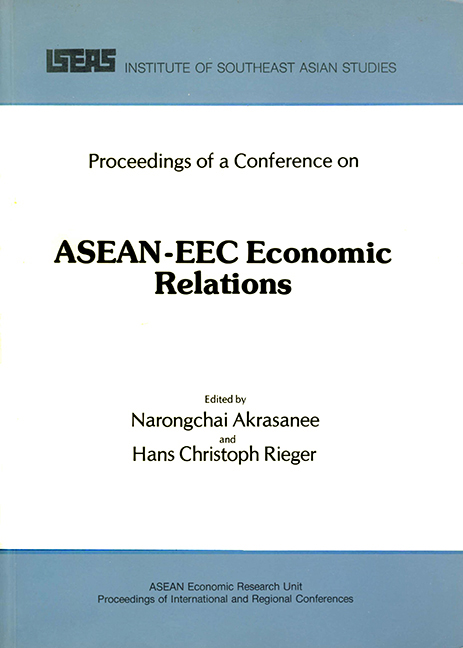EC Investment in ASEAN and the Transfer of Technology: The Malaysian Experience
from II - INVESTMENT
Published online by Cambridge University Press: 21 October 2015
Summary
INTRODUCTION
The European Community (EC) is one of the largest foreign investors in the Association of Southeast Asian Nations (ASEAN). A significant by-product arising from the EC investment is the transfer of technology to the ASEAN countries. Indeed, the transfer of technology constitutes one of the critical issues in EC-ASEAN relations. This is why there has been so much interest in this subject in recent years. In spite of the interest however, only one study has been done on the topic. This study, entitled “The Transfer of Technology from European to ASEAN Enterprises: Strategies and Practices in the Chemical and Pharmaceutical Sectors” was carried out by Philippe Lasserre and Max Boisot for the Commission of the EC in 1980.
The above study was based on 33 cases concerning 28 European corporations and 15 ASEAN companies in the chemical and allied industries. Three main areas of investigation were explored:
the strategies followed by the transferors and the transferees;
the characteristics of the technology transferred and the way it was transferred; and
the results of the transfer as perceived by transferors and transferees.
From the above it is clear that a lot of ground has already been covered in the investigation. In order not to duplicate the work which has already been done, this study has been confined to certain aspects of the technology tranfer issue. Furthermore, in view of time and budget constraints, the study is restricted to Malaysia, one of the ASEAN countries. Despite the limited scope of the study, it is hoped it will provide a useful supplement to the comprehensive study undertaken by Lasserre and Boisot.
DEFINITION
Simply defined, technology is the knowledge and machinery needed to run an enterprise. It is both software, which includes skill and know-how, and hardware, which includes machinery and equipment. Thus, technology transfer includes not only the transfer of machinery but also the transplant of skill.
- Type
- Chapter
- Information
- ASEAN-EEC Economic Relations , pp. 314 - 345Publisher: ISEAS–Yusof Ishak InstitutePrint publication year: 1981



